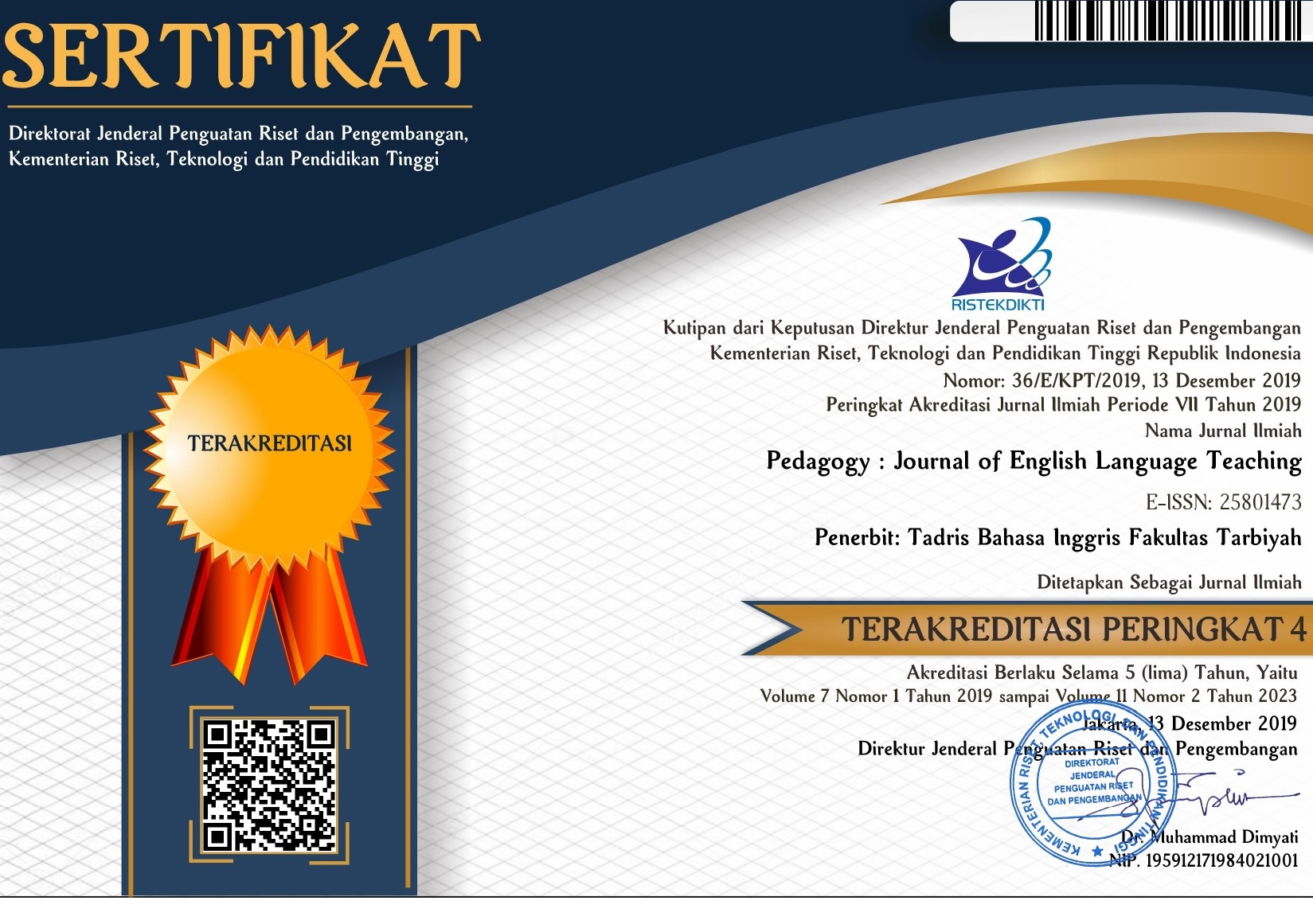CONCEPT OF ANIMATED ELECTRONIC BOOKS IN INCREASING YOUNG LEARNERS’ LITERACY SKILLS IN EFL CLASSROOM
DOI:
https://doi.org/10.32332/pedagogy.v6i1.1090Keywords:
Animated electronic book, EFL classroom, ICT, young learnerAbstract
Process of literacy teaching influences young learners’ future education. Childhood experience of literacy learning in EFL classroom becomes one of the factors that contributes to young learnes’ motivation in learning English. Consequently, the implementation of literacy instruction to young learners in EFL classroom must be conducted interestingly in order to engage them in the enjoyable and understandable English learning process. One of the efforts to encounrage young learners to improve their literacy skills is by the use of ICT in EFL classroom. Importantly, the use of animated electronic books in EFL classroom is considered as one of the beneficial tools used to increase young learners’ literacy skills. Therefore, this article discusses how to implement animated electronic books in increasing young learners’ literacy skills in EFL classroom.















